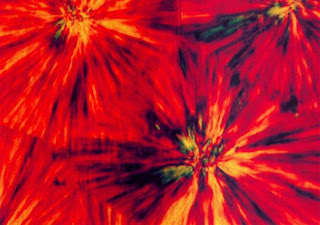Masterbatch and polymer processing.
 I would like to analyze dyeing and it influence on polymer processing and the final product properties. The key point will be the crystallization. Thermoplastics we can divide into that with amorphous (irregular) and semi crystalline structure (regular) it means crystalline in some area and amorphous in other. Crystallization fallows through the nucleation process when crystals rise and grow.
I would like to analyze dyeing and it influence on polymer processing and the final product properties. The key point will be the crystallization. Thermoplastics we can divide into that with amorphous (irregular) and semi crystalline structure (regular) it means crystalline in some area and amorphous in other. Crystallization fallows through the nucleation process when crystals rise and grow. Nucleation impacts on polymer processing and product properties by increasing:
• crystallization temperature (reduces cooling time in injection and extrusion molding up to 20%!),
• transparency,
• mechanical properties.
the reason for it is that we have more crystallization centers and fine grained structure opposite to large sferolits.
 Everything would be ok if we had this knowledge otherwise it can happen that when we dye polymers e.g. with phthalocyanine pigments (blue and green colors) we will receive “natural” nucleation. There is one feature not always desired the shrinkage which comes with the regular structure of polymer. The general rules the darker color the higher nucleation with all adventures and disadvantages. The problem will come out when you produce the same item with different colors. Every time it is needed to correct the machine settings and it means: scrap, downtime, etc. We can find polymers (the described problem we can match e.g. with polypropylene the semi crystalline polymer) where nucleating agents eliminate the effect of nucleation from masterbatch.
Everything would be ok if we had this knowledge otherwise it can happen that when we dye polymers e.g. with phthalocyanine pigments (blue and green colors) we will receive “natural” nucleation. There is one feature not always desired the shrinkage which comes with the regular structure of polymer. The general rules the darker color the higher nucleation with all adventures and disadvantages. The problem will come out when you produce the same item with different colors. Every time it is needed to correct the machine settings and it means: scrap, downtime, etc. We can find polymers (the described problem we can match e.g. with polypropylene the semi crystalline polymer) where nucleating agents eliminate the effect of nucleation from masterbatch. Best Regards,
Piotr S.


Comments